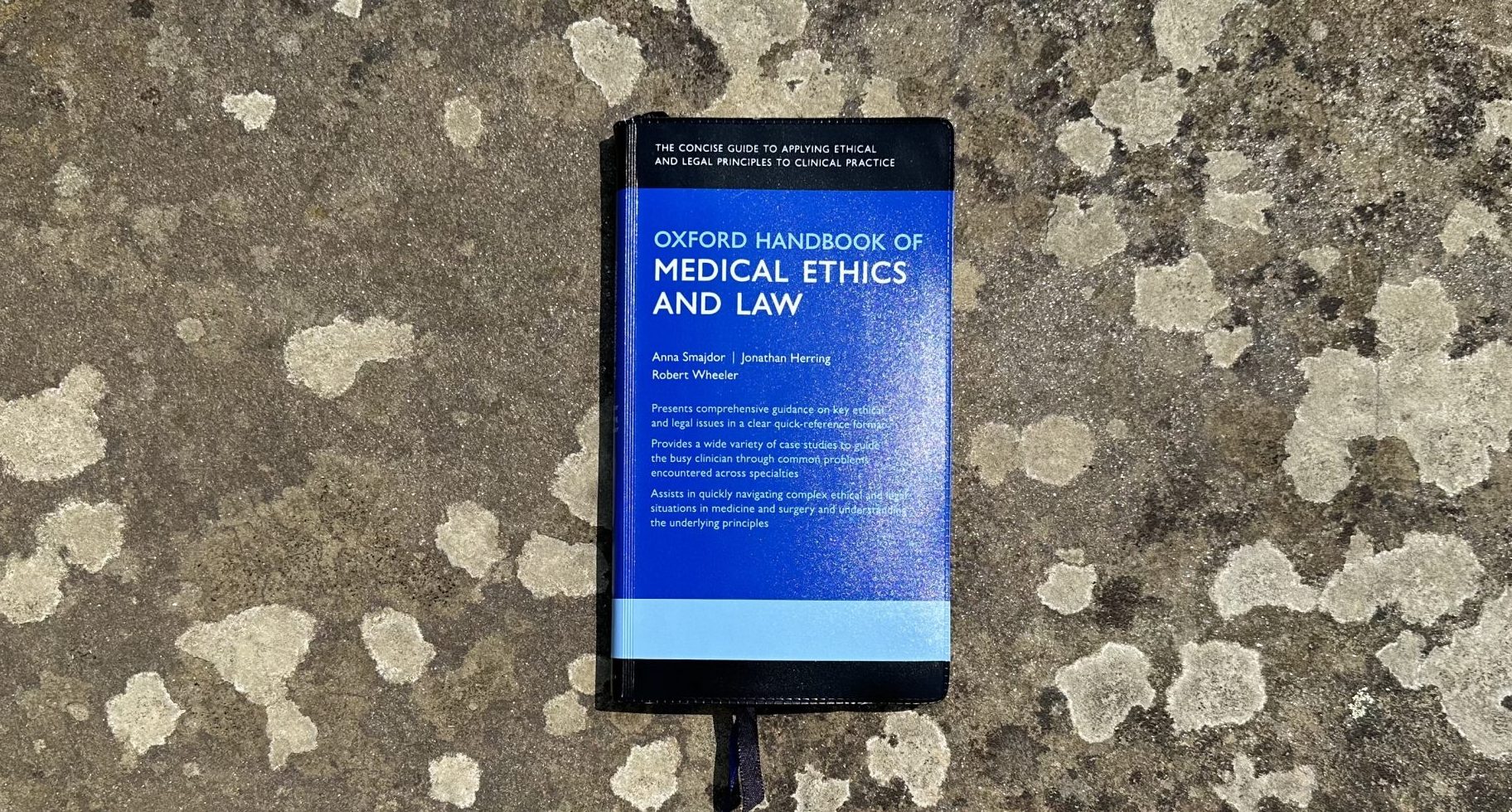 Andrew Papanikitas is deputy editor of the BJGP, and a GP in Oxford. He is on Twitter: @gentlemedic
Andrew Papanikitas is deputy editor of the BJGP, and a GP in Oxford. He is on Twitter: @gentlemedic
GPs are sometimes portrayed as the ethical good guys.1 Ethics, law and professionalism have an explicit place in the Royal College Of General Practitioners curriculum statement on being a GP.2 Regardless, it can be hard to know what to read when an educational need arises in relation to ethics. Where do we start? Do we pick up a book to read on the beach, or in a cosy chair by the fire, do we open a drawer to consult a pocket reference when a patient encounter leaves us feeling uncertain and slightly panicky, with that sinking feeling in the pit of the stomach.3
The Oxford Handbook of medical ethics and law appears suitable for both the contexts described above. It is a brief and easily searchable quick reference. and it covers key ethical tools to think through a case and it covers key aspects of the law as well as a variety of practice specific situations. It has a useful section on key laws, such as the Abortion Act 1967 the Gender Recognition Act 2004, the Mental Health Act of 1983, and the Mental Capacity Act of 2005.
Despite being pocket sized, it also doesn’t shy away from some of the little historical controversies that can sometimes leave us a little cynical about ethical norms and values. For example, it reflects that, despite its widespread mythology, the Hippocratic oath is not a binding covenant sworn by all doctors. It also notes that whilst we make use of Aristotelian virtues and logic, we have to do so being mindful that the historical Aristotle would probably have supported ideas no longer condoned, such as the possession of slaves and the subjugation of women.
The idea of ethics being nuanced by specialty is a very interesting one, and one which deserves more attention by postgraduate medical educators.
The handbook’s only major flaw (spoiler – it is and it isn’t a flaw), particularly from a general practice perspective, is in part four, ‘ethico-legal issues by medical specialism.’ These are alphabetical and it and the issues seem very arbitrarily allocated. This is both misleading for non-medics and frustrating for medical readers. As a general practitioner, for example, I would argue that dilemmas over circumcision are hardly emblematic of family medicine. However, this is not a reason to avoid the book, and I found plenty in the other ‘specialties’ that maps on to the learning needs of a general practitioner, and I don’t doubt this would be the case for other specialities. The idea of ethics being nuanced by specialty is a very interesting one, and one which deserves more attention by postgraduate medical educators. Perhaps the answer here is a page explaining how different specialties may encounter issues with greater frequency than others, or may set greater store by some duties, rather than others, rather than this quick and dirty attempt to pigeonhole the issues. This ethical heterodoxy is definitely something that can contribute to interprofessional disagreement.4 It may also figure in how a profession sees its unique selling point. For example, Howard Brodie and others talk of the complexity with regards to consent arising from the long and varied relationship that a family doctor has with patients and their families and the the power of a capacitors patient in the ‘office’ rather than emergency setting.5,6 All in all this is a useful book which I would recommend whether for the surgery shelf or the home library. Similarly, I think this is a useful introductory text for those embarking on a course or qualification in medical ethics and/or law, as well as for those contemplating a role which involves ethics education.
Featured book: Smajdor, Anna, Jonathan Herring, and Robert Wheeler, Oxford Handbook of Medical Ethics and Law, Oxford Medical Handbooks (Oxford, 2022; online edn, Oxford Academic, 1 Oct. 2021), https://doi.org/10.1093/med/9780199659425.001.0001, (accessed 16 June 2023)
References
- Misselbrook D. The BJGP is open for ethics. Br J Gen Pract. 2012 Mar;62(596):122. doi: 10.3399/bjgp12X629964. PMCID: PMC3289800.
- RCGP (2019), https://www.rcgp.org.uk/getmedia/38f37bbe-f677-429f-90e9-37f855b0ae16/curriculum-being-a-gp-rcgp.pdf (accessed 16 June 2023)
- Toon P. Southgate’s sign. Br J Gen Pract. 2022 Apr 28;72(718):225. doi: 10.3399/bjgp22X719321. PMID: 35483947.
- Wiles K, Bahal N, Engward H, Papanikitas A. Ethics in the interface between multidisciplinary teams: a narrative in stages for inter-professional education. London J Prim Care (Abingdon). 2016 Oct 24;8(6):100-104. doi: 10.1080/17571472.2016.1244892. PMID: 28250845; PMCID: PMC5330340.
- Pellegrino E. The healing relationship: the architronics of clinical medicine, in Shelp EA, ed. The clinical encounters: the moral fabric of the patient-physician relationship. Reidel, Dordrecht 1983 p.679
- Brody H. The essence of primary care. p. 56-61. in The Healer’s Power. New Haven: Yale University Press; 1992







Hi!
I really appreciate your efforts. Keep sharing such informative stuff. Really amazing. Thank you.